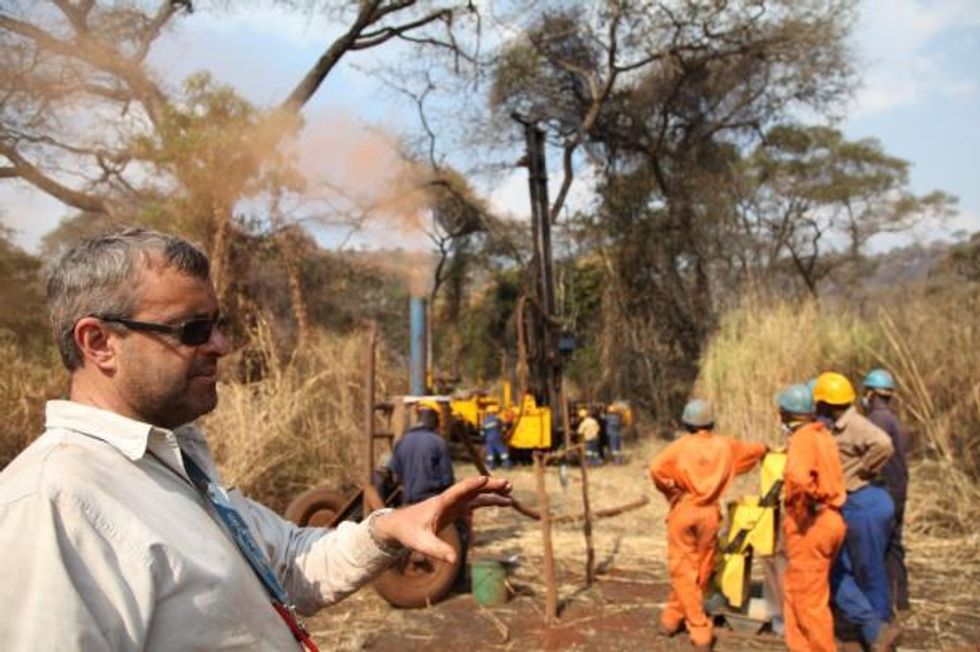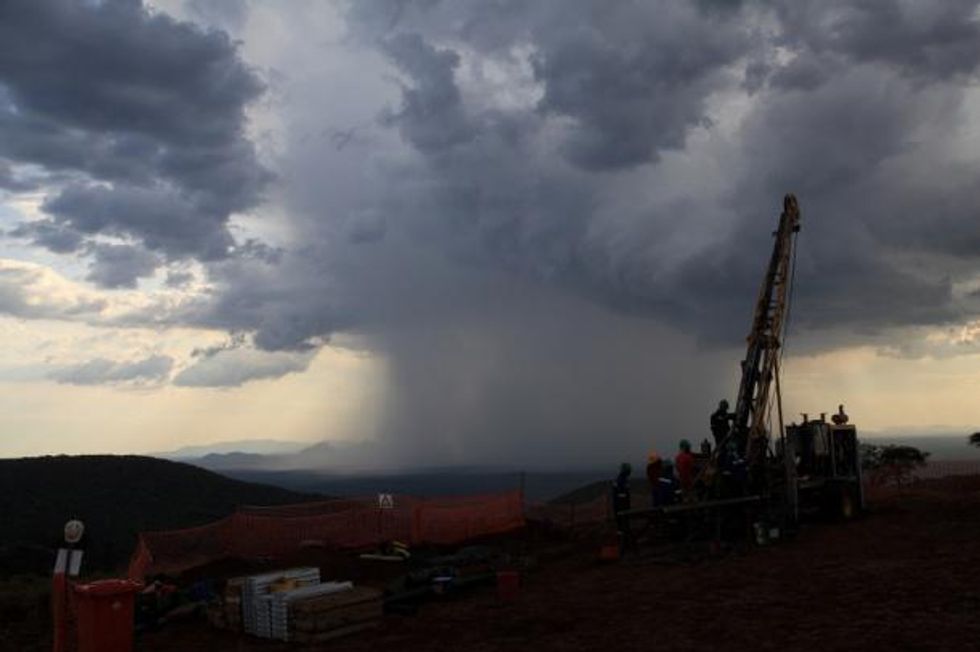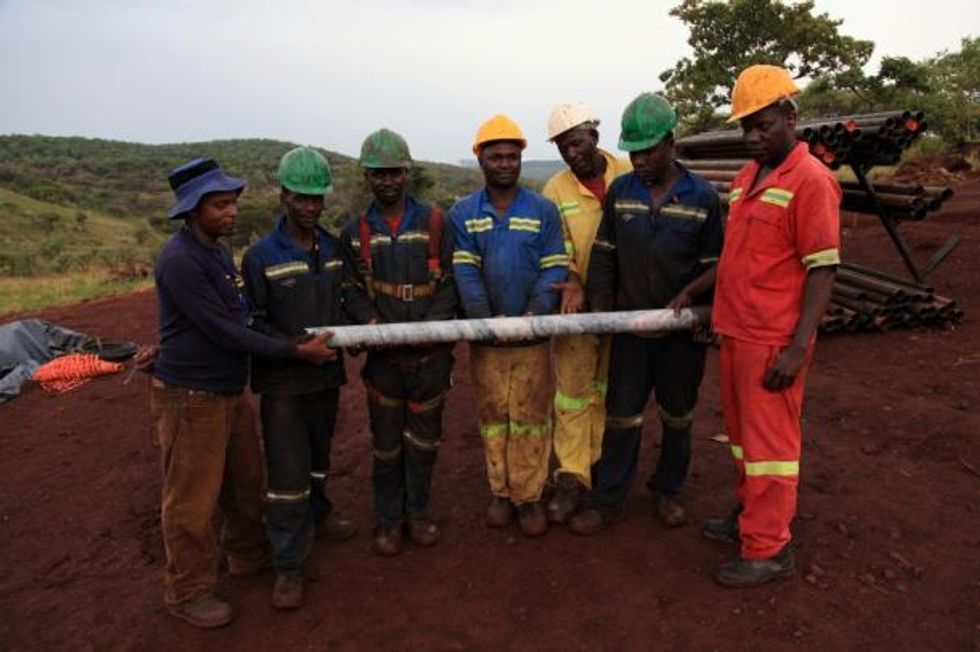Peak Resources: A Rare Earth Junior with a Bright Future
An Australia-based rare earth junior is making impressive progress in its aims to fast track the development of its Tanzanian flagship project.
Listening for sample return, NRC047 on Ngualla Hill. June 2011.
The main drawback of any junior rare earth company is the exorbitant amount of capital needed to take a project through to production. One Africa-focused junior is fast making a name for itself as it continues to improve on the economics of its flagship project.
Peak Resources (ASX:PEK), an Australia-based firm focused on fast tracking the development of its 100-percent-owned Ngualla rare earth project in Tanzania, has attracted increased investor attention of late. Peak’s strategy for growth is to rapidly develop Ngualla into production via lower capital costs and to establish itself as a lower-cost quartile, long-term producer of clean, high-purity rare earth products.
The Ngualla project
Located in Southern Tanzania, 147 kilometers from the city of Mbeya on the edge of the East African Rift, the Ngualla project is centered on the Ngualla carbonatite. The name “Ngualla” comes from the Swahili word for “bald head,” which reflects the appearance of the site, most of which is bare land with no inhabitants or agriculture and very little wildlife.
The Ngualla deposit can be divided into two geographic and geological areas: the Southern rare earth zone, located in the center of the carbonatite around Ngualla Hill, and the South West alluvial zone. The Southern rare earth zone is a 1-kilometer by 1-kilometer area in the low magnetic central core of the Ngualla carbonatite, according to the company’s maiden JORC resource report. Rare earth mineralization occurs from the surface and is enriched in the weathered zone of the carbonatite, varying from a few meters to 140 meters vertical depth. The bulk of Ngualla’s mineral resource is contained within the Southern rare earth zone and most of the highest-grade component occurs near surface.
Peaks Technical Director Dave Hammond explains a finer geological point during the maiden resource drilling program in the South West alluvials area at Ngualla. October 2011.
“Distinct advantages”
The project is a recent discovery and, according to the company, its fundamental geological aspects offer distinct advantages for development over other rare earth projects.
Some of these advantages include being one of the largest and highest-grade deposits in the world, as well as hosting an outcropping blanket of mineralization with the highest grades at surface. This favorable mineralogy makes the deposit amenable to a relatively simple, low-cost processing route, while its uranium (21 ppm) and thorium levels (35ppm) levels are the lowest of any major rare earth deposit in the world, the company’s website notes. Further, initial development will exploit only 10 percent of the total resource over a 25-year period, allowing for significant opportunities for future expansions.
It has not been lost on most investors that Ngualla is a “company maker” — the project has drawn comparisons to Lynas Corporation’s (ASX:LYC) Mount Weld project, a company press release notes.
The project received a significant boost last year when Peak announced the results of a scoping study that reveals Ngualla’s strong economics. At the time, it stated that Ngualla hosts a resource of 170 million metric tons (MT) at 2.24-percent rare earth oxide (REO), making it “the fifth largest rare earth deposit in the world outside of China.” It also has the highest grades of the world’s top seven deposits. The company noted a base case pre-tax net present value figure of $1.571 billion over the 25-year life of the mine, with an average cost of $11.05 per kilogram over that mine life. Average annual revenues will come to $361 million at 10,000 MT equivalent REO production.
Critical rare earth oxides
As the technological applications of rare earths have changed, so too have supply and demand fundamentals. That was highlighted in the US Department of Energy’s 2011 Critical Materials Strategy report, which outlines the critical rare earth oxides (CREOs) that will likely be in short supply moving forward.
The Ngualla project contains a substantial proportion of five CREOS, which together account for 56 percent of the deposit’s in-ground value. Neodymium is the most prominent, at 34 percent of this value, with other notable CREOs being europium, terbium, dysprosium and yttrium, according to Peak’s website.
Returning to work after a passing storm. Diamond drilling on Ngualla Hill. November 2010.
Seeking strategic partners
Also impressive is the fact that the company is currently engaging cornerstone and strategic partners to assist in taking Ngualla through to production in 2016. Considering the project’s 53-percent internal rate of return, it is an attractive investment for strategic investors willing to bet on rare earth oxides in the long run.
In the February issue of Resource Stocks, the company confirmed its plans to engage a strategic partner in the second half of this year, having been working with various strategic investors out of China, South Korea, Japan and Germany, from which interest is “fairly high and competitive.”
Always looking to improve
While last year’s resource study effectively put Peak on the map, it is the company’s continued success in improving its economics that is proving enticing.
Earlier this month, Peak announced further improvements to the beneficiation process for its Ngualla project in a move that it says has enhanced the project’s overall economics. It noted that the ability to concentrate mineralization at an early stage prior to acid-leach recovery will have a significant positive impact on the project’s costs moving forward.
Outlining some highlights, it confirmed that the optimization of its beneficiation process effectively reduces the mass of feed to be treated by the acid-leach recovery process by 43 percent compared to the initial scoping study’s assumption. The optimized process in turn increases the grade of the feed by over 300 percent, from 5.3-percent REO to 16.9-percent REO for the test’s composite sample.
Northern zone diamond drilling, NDD003, final run of PQ3 core to 70 meters in fresh, calcite-rich carbonatite. December 2010.
The latest test work also shows that conventional magnetic separation and flotation techniques reduce the mass of the feed mineralization by 78 percent, and that reducing the amount of material processed at the acid leach recovery stage has a significant impact on overall operating costs. These cost reductions are set to be quantified in a revision of the scoping study and economic assessment that will be completed in the second quarter of 2013. The revised study will also use a new optimized mine schedule based on the new mineral resource estimate and is on schedule for completion by the end of this month.
Richard Beazley, managing director, commented in the press release, “Ngualla continues to improve with each milestone. We are already in the lower quartile in terms of operating costs, and also have one of the lowest capital costs of any rare earth project.”
Last year was a massive year for this junior as it notched up three major milestones; however, 2013 could very well provide the watershed moment investors are hoping for. With the firm keenly set on finalizing products, attracting investors and strategic partners, the prefeasibility study for Ngualla is likely to finally get this hard-working junior the recognition it deserves.
Securities Disclosure: I, Adam Currie, hold no direct investment interest in any company mentioned in this article.
Related reading:
Africa: The Next Rare Earth Frontier?
Rare Earth Mining in South Africa
Building a “Mines to Markets Company”: Q&A with Great Western Minerals



